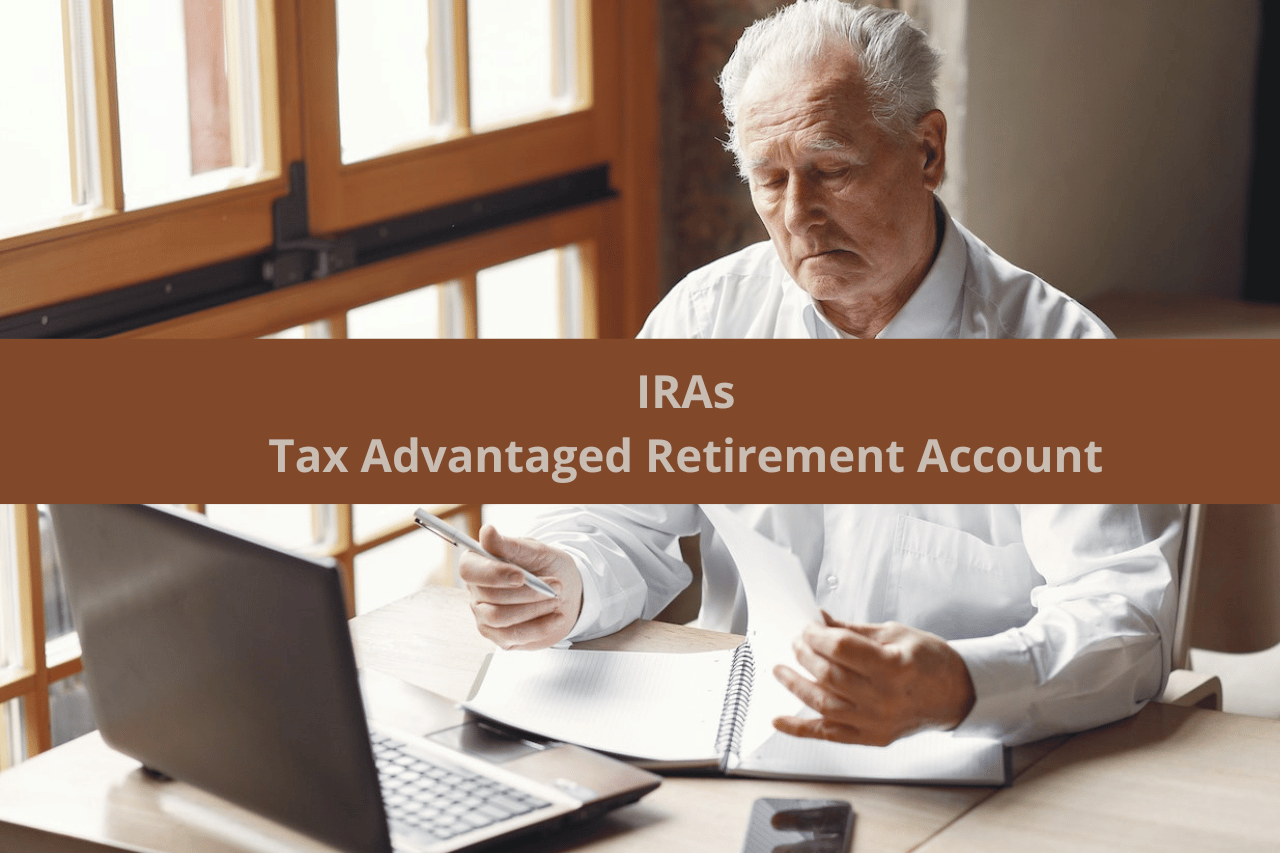Individual Retirement Accounts (IRAs) are tax-advantaged investment accounts. Using an IRA, you can save up for retirement with tax-deductible contributions or tax-free withdrawals. They are a great alternative retirement savings choice for those that don't have a company pension or 401k plan. Or as an additional plan for those that have these options to reduce their taxable income further.
Once limited to holding gold and silver coins, you can now invest IRAs in permitted gold and silver, platinum bullion and coins, bonds and stocks, and cryptocurrency.
Most financial institutions offer IRA services managed by banks or brokers who can offer expert advice and planning.
History of the Individual Retirement Account
First introduced in 1974, IRAs followed the Employee Retirement Income Security Act (ERISA). It allowed up to 15% of employee's income to be contributed to the IRA, reducing taxable income.
The initial arrangement excluded employees already covered under some employment-based retirement plans. Only after the Economic Recovery Tax Act (ERTA) could employees under 70 make contributions regardless of other coverage.
While annual contributions were raised, employees could also contribute up to $250 on behalf of a non-working spouse. Up to 2021, a maximum contribution of $6000 was allowed; starting in 2022, an additional $1000 as a catch-up contribution has also been allowed.
Why Invest in an IRA
IRAs are considered one of the best options to increase financial wealth. They are also a reliable retirement fund plan. And you can have multiple IRAs to reduce your risk and expand your investing options.

Easy access and investment
For one, an IRA is an easily accessible option. Not only is it easy to set up and contribute to a traditional IRA, but it also has no age restrictions. Additionally, most banks or brokerage firms can open an IRA on your behalf in minutes, with help from financial advisors and automated investment portfolios.
Tax benefits
The tax advantages an IRA offers also make it a lucrative investment. Traditional IRAs allow you to make pre-tax contributions, with a regular income tax levied on withdrawal. Roth IRAs implement initial tax, but all withdrawals are tax-free. Taxable income can be lowered, and more amounts can be invested upfront with IRAs.
Diverse investment options
IRAs diversify your investment options beyond what’s traditionally available. In addition to mutual funds and stocks, coins, mortgages, and real estate are some popular assets IRAs can be used to invest in. Crypto IRAs are an increasingly popular option as they continue to become more accessible.
These diverse investment options are what make an IRA a great option to invest in for retirement.
Basics of an IRA
An IRA is an account you set up with a financial institution to save for retirement with tax-associated benefits. You can consider it an easy option created by the IRS to better guide people about their retirement options. It provides you with many investment choices you can choose according to your savings needs and risk appetite.
Self-employed and small business owners can also open IRAs, which come in several different types. An IRA is not an investment; rather, it is the account that holds your investment and allows you to manage it.
IRAs are officially referred to as Individual Retirement Arrangements by the IRS. Withdrawals before the age of 59½ may be subject to tax and a 10% penalty, as it is lower than the official retirement age.
Explain IRA Account: IRA Account Options
IRAs come in several different types of account options. Each comes with its own set of requirements and limitations.
Traditional IRAs
Traditional IRAs reduce your taxable income by contributions coming from pre-taxed income. Based on your income at the withdrawal time, taxes are paid on the withdrawn amount. Individuals over 50 can make contributions of up to $7000. You are qualified to make contributions at any age as long as you have earned income but the contribution limit can vary.
Roth IRAs
Contributions for Roth IRAs come from after-tax income. This allows you to withdraw your money without taxes or penalties. Earnings can be withdrawn tax-free in retirement. Unearned income, which includes any investment income, cannot be contributed. The same annual contribution cap applies to Roth IRAs. A Saver’s Credit tax break may also apply, up to 10-50% for low-income taxpayers.
Rollover IRA
Rollover IRAs are used to transfer funds from employer-sponsored retirement funds into an IRA. The tax-advantaged status of assets is preserved without paying taxes or penalties. Avoiding immediate taxes on your 401(k) is seen as a beneficial option by many, where savings can grow without taxes.
Self-directed IRA
Self-directed IRAs allow you to save up retirement funds with otherwise off-limit assets. These include real estate, precious metals, and cryptocurrencies. While they can be rewarding, they have a few complicated requirements and fees.
Examples of IRA: Real Life Example of IRA – Options IRA
You can use IRAs to invest in a variety of asset classes. For instance, savings accounts are the most common low-risk investment. They are a very safe option and have low-interest rates. Certificates of deposit (CDs) are also considered a safe option, with typically higher interest payouts than savings accounts.
Treasury bills and savings bonds are also considered low-risk and popular investments, though there is a high initial purchasing cost. These are incredibly safe as they are issued and backed by the Federal Government.
On the other hand, higher-risk IRA options include mutual funds and exchange-traded funds (ETFs). They offer greater portfolio diversification and higher returns. They often require professional managers, given the higher risk, but also promise higher rewards.
Fund an IRA
The most basic funding option for IRAs is a check or bank transfer. Moreover, various asset types can fund IRAs, including stocks, bonds, ETFs, real estate, and even gold and silver. Cryptocurrency has been a very successful addition to this list due to the increase in its popularity. There is some exception as to what can be used to fund an IRA.
Although the incidental benefit rule allows an IRA to be used to purchase a small amount of life insurance, it cannot be titled an IRA. The limitations on IRA investments are major factors to consider when funding your IRA. Additionally, any artwork, antiques, or collectibles cannot be held in IRAs even if these are categorized as items worth thousands of dollars.
Any real estate purchased for personal use rather than an investment is also not allowed. These include real estate purchased under the name of your spouse, children, or grandparents.
You can also transfer an IRA from one institution to another to fund a new IRA.
Conclusion
IRAs have always been a popular option as a retirement plan for investors seeking growth, balance, and reduced income taxes. The reason is that they make investment decisions about your retirement a lot easier. They can make your tax return filing less painful knowing you might get a refund instead of a tax bill if you plan accordingly. You can further explore precious metal self-directed IRAs and crypto IRAs and decide what best suits your needs.
Risk Disclosure: Any investments come with an inherent risk, where you could end up making less money than what you put in. Before investing your hard-earned cash, be sure to speak with licensed professional financial advisor first. Always remember that past performance is not an indication of future returns.
Disclaimer: The website's owners of Cryptowealthbay.com may be compensated for suggesting certain businesses, goods, and services. While we do everything possible to verify that all of our content is accurate, the information we provide may not be impartial or unbiased, and it does not constitute financial advice.

